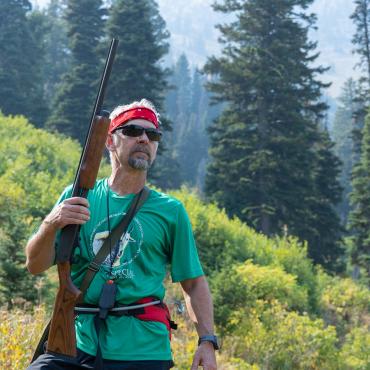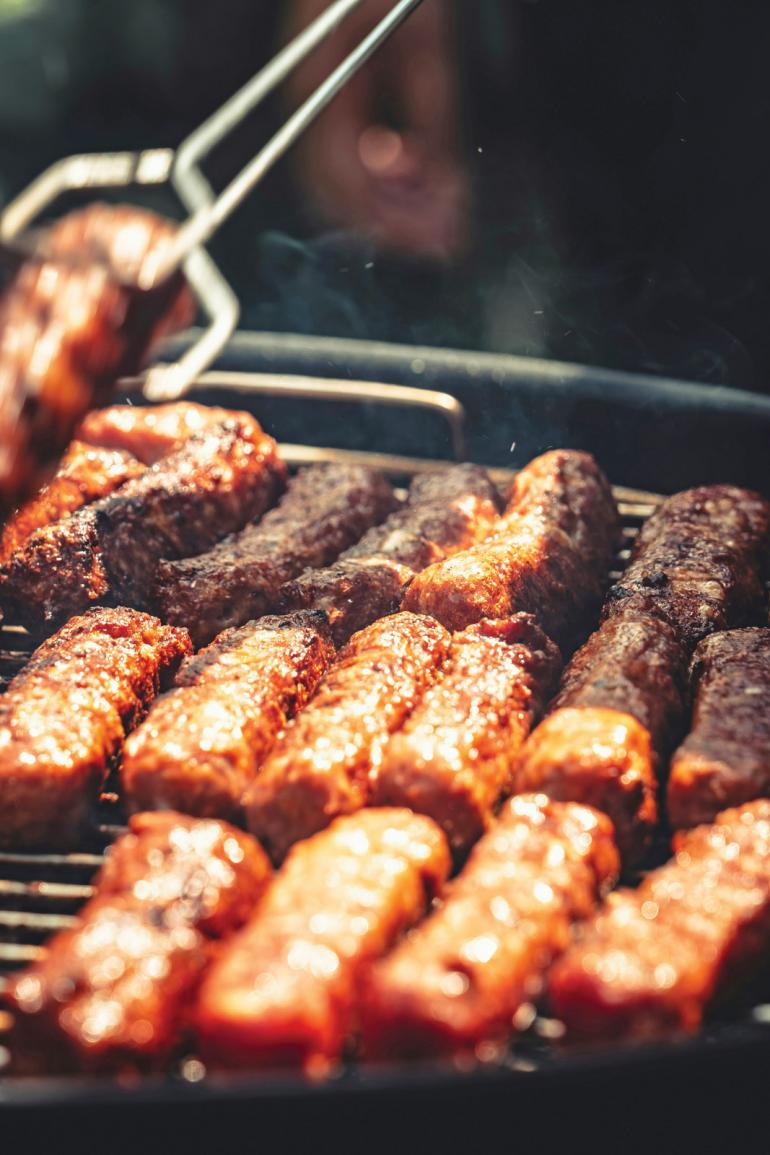Sausage Party
The basics of at-home sausage making.
Get five hunters in the kitchen and you’re likely to get five different theories on how to make the best sausage. There are entire books dedicated to the process, so think of the following guide as just the first step to a lifetime of learning, debating, and (hopefully) tasting home-processed wild-game sausage.
First, sausage-making is all about ratios. You need to know your numbers. Most wild game is extremely lean, so for the best sausage outcome you’ll need to mix in fat from another animal. I use pork fat purchased from a local butcher shop. It’s typically fresh, and I can buy it in amounts that I need.
If I don’t have as much grind as I was hoping for, I mix in pork butt and treat it as 50 percent meat and 50 percent fat; so one pound of pork butt equals a half-pound of meat and a half-pound of fat. My typical ratio when using pork butt is: 1 lb. game meat, 1/2 lb. pork butt, 1/4 lb. pork fat. For example, if I have 5 lbs. of deer, I mix it with 2 1/2 lbs. of pork butt and 1 1/4 lbs. of pork fat.
If the hunting season was bountiful, I’ll leave out the pork butt and go for a straight 70/30 mix: every pound of sausage is .7 lb. of game and .3 lb. of pork fat. E.g., if I have 7 pounds of game, I’ll add 3 lbs. of pork fat for a total of 10 lbs. of sausage.
Now let’s talk about adding spices. I used to buy all the spices and mix each different batch up myself. I’d figure out how much I needed for one pound, and multiply all the sausage ingredients by the number of pounds I was making. With the needed spices and amounts in hand, I’d head to the store and hopefully find everything I wanted. Luckily, I soon discovered the pre-mix spice packages, including ones you can get from Sausage Equipment and Supplies (S.E.S.) in Three Forks. With all traditional sausage flavors pre-mixed, it becomes simple math to figure out how much mix to use.
Meat and spices acquired, here’s how I make the sausage. I weigh out the fat, game meat, and pork butt, and combine it in a large plastic tub and run it through the grinder. Then I add the seasoning, work it around as much as possible by hand, and run it back through the grinder. To ensure it has the flavor I want, I cook up a little test patty and add more seasoning if needed. I then cover the meat bowl with plastic wrap, and refrigerate it overnight to help the seasoning dissipate evenly throughout the sausage. Finally, I stuff the sausage in either a freezer bag or a casing, depending on the type (I do Italian and chorizo loose in freezer bags, but stuff brats into casings). For some folks, the final step is to fire up the smoker for the sausage wrapped in casings, but that step is out of my wheelhouse. Either way, the product is sure to taste delicious.
Before you get started, here are a couple of items worth acquiring:
- Meat grinder (if you’re planning to get serious, get your own grinder. If you just want to try it out, borrow a friend’s)
- Hand-crank stuffer
- 50-lb. scale for weighing meat and fat
- Small scale for weighing spices
- A couple of large, plastic tubs
Finally, here are a few tips & tricks I’ve learned over the years:
- Refrigerate all metal parts of the grinder prior to each grind.
- Keep the meat as cool as possible.
- When in doubt, go light on the seasoning. You can always add more, but you can’t take seasoning out.
- If you get your spice mixes from S.E.S., they are more than happy to share their own tips.
Chris McCarthy is the sales manager at Outside Media Group, the publisher of Stalk.















